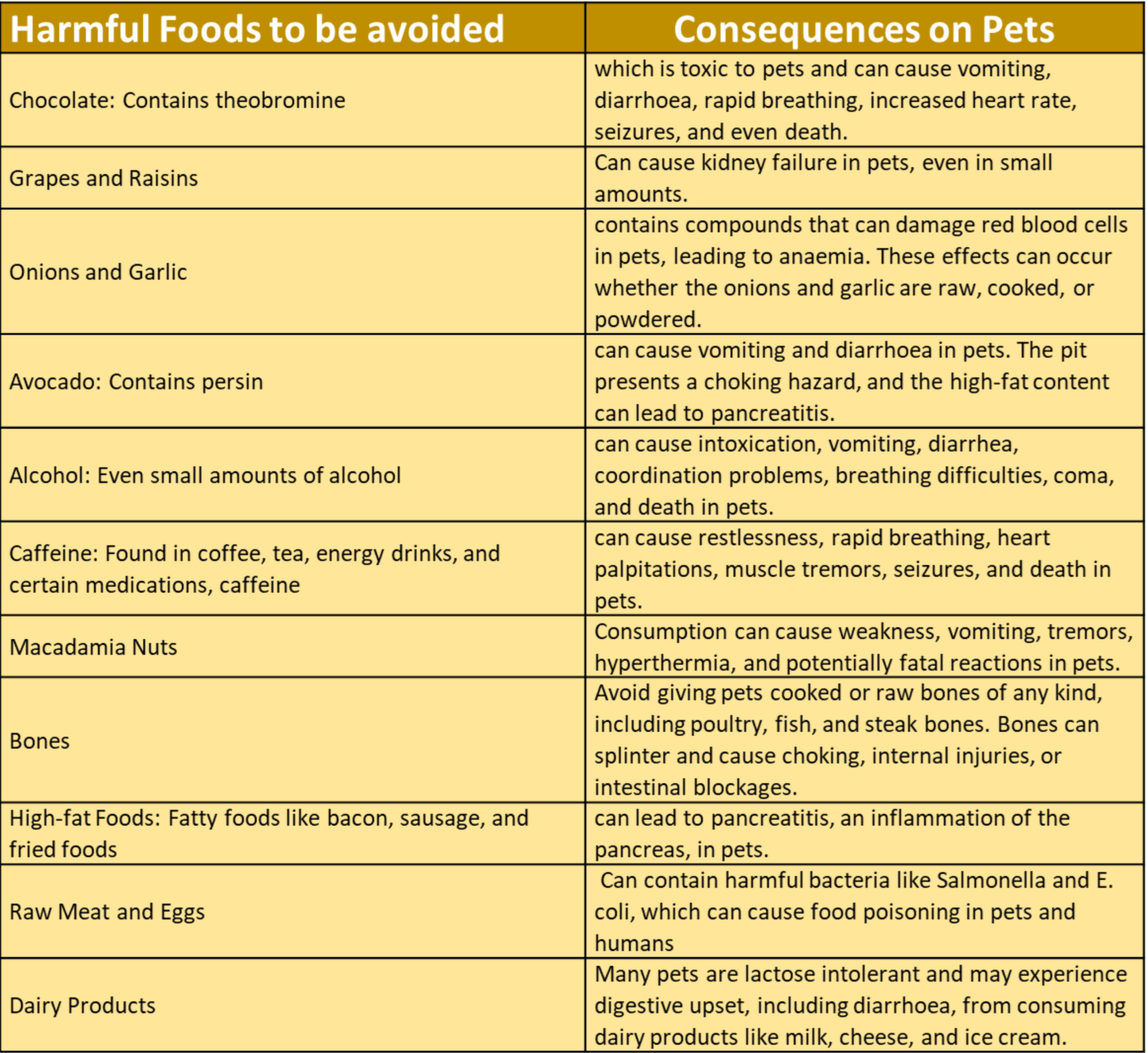Pets that are eating unhealthy and inferior food are prone to all sorts of issues like:
- Skin disorders, dull coat
- Digestive issues
- life-shortening
- Obesity
- Excessive shedding
- Increased propensity to allergies
- Kidney, liver and heart disorders
- Bad dental and bone health
To ensure our furry friend’s perfect health and fitness, you as a pet parent need to be very selective and cautious with the selection of foods for them. These food products must be safe, guilt free and contain all nutrients and vitamins your cuddly pooches require daily.
This article covers and helps you to find a perfect and safe product for your pet.
A. Always read ingredients on the packaging

| Harmful Ingredients to watch in ingredients |
|---|
| Chemical preservatives- like BHA, BHT, and ethoxyquin |
| Artificial Colours: Synthetic dyes |
| Artificial Flavours: These can contain unhealthy additives |
| By-products : By-products can include low-quality and potentially harmful parts of animals, such as beaks, bones feathers, and feet. |
| Fillers: Ingredients like corn, wheat, and soy |
| Grains: While not necessarily harmful to all pets |
| Added Sugar: Excessive sugar consumption |
| Rendered Fat: Poor quality or improperly rendered fats |
| Meat and Bone Meal: The quality and sourcing of these ingredients |
| Carrageenan: This common thickening agent |
| Propylene Glycol, Glycerine: Used as a preservative, this is a chemical |
| Xylitol: This artificial sweetener, products like gum, candy, and baked goods with Xylotil |
| Consequences on Pets |
|---|
| Serious health issues, Food poisoning, Liver and digestive issues |
| May cause serious allergic reactions |
| Contribute to digestive and colon issues |
| Food poisoning, vomiting, allergies
|
| Can cause allergies and digestive problems in some pets. |
| Problematic for those with allergies or sensitivities. |
| Can lead to obesity, diabetes, and dental problems in pets. |
| Can contain harmful contaminants. |
| Can vary widely, potentially containing harmful additives or contaminants. |
| It has been linked to inflammation and digestive issues in pets. |
| Can be toxic to pets. |
| It is highly toxic to pets and should be avoided at all costs. Can cause a sudden release of insulin in pets, leading to hypoglycaemia (low blood sugar), seizures, liver failure, and even death. |
B. Avoid foods that are not good for pets

| Harmful Foods to be avoided |
|---|
| Chocolate: Contains theobromine |
| Grapes and Raisins |
| Onions and Garlic |
| Avocado: Contains persin |
| Alcohol: Even small amounts of alcohol |
| Caffeine: Found in coffee, tea, energy drinks, and certain medications, caffeine |
| Macadamia Nuts |
| Bones |
| High-fat Foods: Fatty foods like bacon, sausage, and fried foods |
| Raw Meat and Eggs |
| Dairy Products |
| Consequences on Pets |
|---|
| which is toxic to pets and can cause vomiting, diarrhea, rapid breathing, increased heart rate, seizures, and even death. |
| Can cause kidney failure in pets, even in small amounts. |
| contains compounds that can damage red blood cells in pets, leading to anaemia. These effects can occur whether the onions and garlic are raw, cooked, or powdered. |
| can cause vomiting and diarrhoea in pets. The pit presents a choking hazard, and the high-fat content can lead to pancreatitis. |
| can cause intoxication, vomiting, diarrhea, coordination problems, breathing difficulties, coma, and death in pets. |
| can cause restlessness, rapid breathing, heart palpitations, muscle tremors, seizures, and death in pets. |
| Consumption can cause weakness, vomiting, tremors, hyperthermia, and potentially fatal reactions in pets. |
| Avoid giving pets cooked or raw bones of any kind, including poultry, fish, and steak bones. Bones can splinter and cause choking, internal injuries, or intestinal blockages. |
| can lead to pancreatitis, an inflammation of the pancreas, in pets. |
| Can contain harmful bacteria like Salmonella and E. coli, which can cause food poisoning in pets and humans |
| Many pets are lactose intolerant and may experience digestive upset, including diarrhoea, from consuming dairy products like milk, cheese, and ice cream. |
When choosing a food or your pet, it’s important to look for products that are safe, healthy, and made from high-quality ingredients. The functional and high-quality natural treats and jerkies as topping with good food can help your pet’s daily nutritional and energy requirements.
C. Here are some tips for selecting the best jerky for your pet:

| Good factors to look for |
|---|
| Single or Limited Ingredient: Opt for jerky treats, foods with minimal ingredients, ideally single-ingredient products. |
| High-Quality Protein: Look for jerky treats made from high-quality sources of protein, such as chicken, turkey or fish. |
| Natural Ingredients: Choose jerky treats that are made with natural ingredients and free from artificial preservatives, colours, Flavors, and fillers. |
| No Added Sugars or Salts: Avoid jerky treats that contain added sugars, salts, or artificial sweeteners, |
| Look for critical information: Like Human grade, Hypoallergenic, No - Gluten, Preservatives, Chemicals, Flavors, Colours, Glycerine, Starch |
| Made in Trusted Locations |
| Grain-Free Options: If your pet has food sensitivities or allergies |
| Size and Texture: Choose jerky treats that are appropriate for your pet's size, age. |
| Certifications and Standards: |
| Read Reviews and Recommendations: |
| Benefits to pets |
|---|
| This makes it easier to identify exactly what your pet is consuming and reduces the risk of potential allergens or additives. |
| High quality protein provides your pet energy, immunity and health |
| Natural ingredients are generally healthier for your pet and reduce the risk of adverse reactions. |
| This will help you to ensure below issues are not with your pet: obesity, dental problems, and other health issues. |
| These are very important aspect of a healthy and safe products |
| Look for food that are made in reputable facilities with strict quality control measures and safety standards. Refer certifications |
| consider grain-free jerky treats made without wheat, corn, or soy. Instead, look for alternatives like peanut butter, sweet potatoes, peas, or lentils as carbohydrate sources. |
| For example, smaller pets may prefer softer or thinner jerky strips, while larger pets may enjoy thicker or more substantial treats. |
| Look for jerky treats that have been certified by reputable organizations such as the ISO, GMP or have undergone third-party testing for safety and quality. |
| Before purchasing jerky treats, read reviews from other pet owners or connect with the brand's customer care or consult with your veterinarian for recommendations based on your pet's specific dietary needs and preferences. |
By carefully selecting food, jerky, treats that meet these criteria, you can ensure that your pet enjoys a safe and nutritious food and snack. However, it’s always a good idea to monitor your pet’s consumption and watch for any adverse reactions or changes in behaviour. If you have any concerns about your pet’s diet or health, consult with your veterinarian for guidance.
Hope you liked the above article. Pls follow our page and stay tuned for more informational blogs.





Leave a reply